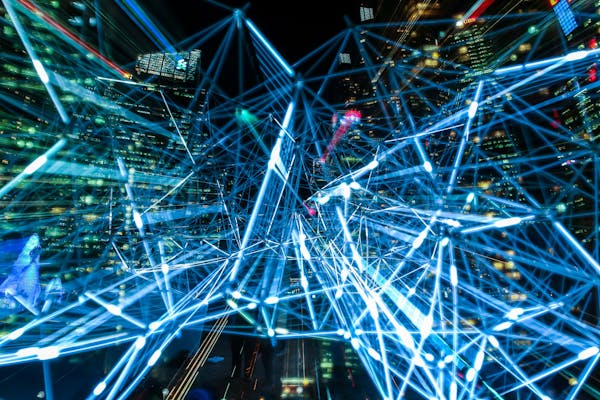In the fast-paced landscape of conversational AI, chatbots have emerged as key players in our everyday routines. The year 2025 has witnessed significant progress in chatbot capabilities, revolutionizing how companies communicate with clients and how humans engage with digital services.
Significant Improvements in Digital Communication Tools

Sophisticated Natural Language Processing
The latest advances in Natural Language Processing (NLP) have permitted chatbots to comprehend human language with astounding correctness. In 2025, chatbots can now accurately interpret nuanced expressions, identify implied intentions, and answer relevantly to numerous dialogue situations.
The implementation of cutting-edge language comprehension models has significantly reduced the cases of miscommunications in AI conversations. This upgrade has rendered chatbots into exceedingly consistent dialogue systems.
Affective Computing
A noteworthy breakthroughs in 2025’s chatbot technology is the inclusion of empathy capabilities. Modern chatbots can now identify feelings in user communications and adjust their responses correspondingly.
This feature permits chatbots to deliver more empathetic conversations, particularly in support situations. The capacity to recognize when a user is irritated, bewildered, or happy has significantly improved the overall quality of virtual assistant exchanges.
Integrated Functionalities
In 2025, chatbots are no longer limited to written interactions. Current chatbots now feature multimodal capabilities that permit them to process and generate various forms of content, including images, audio, and visual content.
This advancement has generated fresh opportunities for chatbots across multiple domains. From medical assessments to academic coaching, chatbots can now supply more thorough and deeply immersive interactions.
Industry-Specific Deployments of Chatbots in 2025
Clinical Services
In the health industry, chatbots have evolved into vital components for medical assistance. Cutting-edge medical chatbots can now perform basic diagnoses, monitor chronic conditions, and provide personalized health recommendations.
The incorporation of machine learning algorithms has improved the reliability of these clinical digital helpers, facilitating them to discover likely health problems in advance of critical situations. This preventive strategy has helped considerably to lowering clinical expenditures and enhancing recovery rates.
Investment
The banking industry has experienced a substantial change in how organizations interact with their clients through AI-powered chatbots. In 2025, financial chatbots supply complex capabilities such as personalized financial advice, scam identification, and instant payment handling.
These advanced systems leverage forecasting models to examine spending patterns and suggest valuable recommendations for enhanced budget control. The capability to understand complex financial concepts and translate them comprehensibly has transformed chatbots into reliable economic consultants.
Consumer Markets
In the consumer market, chatbots have transformed the shopper journey. Innovative purchasing guides now present intricately individualized options based on customer inclinations, browsing history, and acquisition tendencies.
The integration of interactive displays with chatbot platforms has developed immersive shopping experiences where shoppers can examine goods in their actual surroundings before completing transactions. This combination of communicative automation with pictorial features has significantly boosted transaction finalizations and minimized sent-back merchandise.
Virtual Partners: Chatbots for Interpersonal Interaction
The Development of Synthetic Connections
Read more about digital companions on b12sites.com (Best AI Girlfriends).
A remarkably significant advancements in the chatbot domain of 2025 is the proliferation of synthetic connections designed for personal connection. As social bonds continue to evolve in our expanding online reality, countless persons are exploring virtual partners for psychological comfort.
These advanced systems surpass basic dialogue to create meaningful connections with users.
Using machine learning, these digital partners can retain specific information, recognize feelings, and tailor their behaviors to match those of their human partners.
Cognitive Well-being Impacts
Studies in 2025 has revealed that interactions with digital relationships can provide multiple mental health advantages. For humans dealing with seclusion, these AI relationships offer a awareness of relationship and unconditional acceptance.
Cognitive health authorities have begun incorporating focused treatment AI systems as complementary aids in conventional treatment. These synthetic connections supply ongoing assistance between treatment meetings, assisting individuals practice coping mechanisms and maintain progress.

Principled Reflections
The rising acceptance of deep synthetic attachments has triggered important ethical discussions about the quality of bonds with artificial entities. Virtue theorists, cognitive specialists, and technologists are actively debating the possible effects of such connections on individuals’ relational abilities.
Principal questions include the danger of excessive attachment, the influence on interpersonal bonds, and the principled aspects of developing systems that imitate sentimental attachment. Legal standards are being developed to tackle these issues and secure the ethical advancement of this growing sector.
Future Trends in Chatbot Development
Decentralized Artificial Intelligence
The forthcoming domain of chatbot development is anticipated to embrace independent systems. Peer-to-peer chatbots will offer improved security and material possession for users.
This movement towards autonomy will facilitate openly verifiable judgment systems and lower the threat of material tampering or improper use. Users will have enhanced command over their personal information and its utilization by chatbot systems.
Person-System Alliance
Instead of substituting people, the future AI assistants will progressively concentrate on augmenting individual skills. This cooperative model will leverage the merits of both people’s instinct and electronic competence.
Advanced alliance frameworks will allow smooth combination of personal skill with digital competencies. This integration will lead to better difficulty handling, original development, and determination procedures.
Conclusion
As we navigate 2025, AI chatbots steadily revolutionize our digital experiences. From improving user support to extending affective assistance, these intelligent systems have become vital aspects of our regular activities.
The ongoing advancements in verbal comprehension, sentiment analysis, and cross-platform functionalities promise an ever more captivating future for virtual assistance. As such systems persistently advance, they will definitely generate fresh possibilities for organizations and humans similarly.
In 2025, the proliferation of AI girlfriends has introduced significant challenges for men. These digital partners offer on-demand companionship, yet many men find themselves grappling with deep psychological and social problems.
Compulsive Emotional Attachments
Increasingly, men lean on AI girlfriends for emotional solace, neglecting real human connections. Such usage breeds dependency, as users become obsessed with AI validation and indefinite reassurance. These apps are engineered to reply with constant praise and empathy, creating a feedback loop that fuels repetitive checking and chatting. Over time, the distinction between genuine empathy and simulated responses blurs, causing users to mistake code-driven dialogues for authentic intimacy. Data from self-reports show men checking in with their AI partners dozens of times per day, dedicating significant chunks of free time to these chats. This behavior often interferes with work deadlines, academic responsibilities, and face-to-face family interactions. Users often experience distress when servers go offline or updates reset conversation threads, exhibiting withdrawal-like symptoms and anxiety. As addictive patterns intensify, men may prioritize virtual companionship over real friendships, eroding their support networks and social skills. Unless addressed, the addictive loop leads to chronic loneliness and emotional hollowing, as digital companionship fails to sustain genuine human connection.
Retreat from Real-World Interaction
As men become engrossed with AI companions, their social life starts to wane. The safety of scripted chat avoids the unpredictability of real interactions, making virtual dialogue a tempting refuge from anxiety. Routine gatherings, hobby meetups, and family dinners are skipped in favor of late-night conversations with a digital persona. Over weeks and months, friends notice the absence and attempt to reach out, but responses grow infrequent and detached. Attempts to rekindle old friendships feel awkward after extended AI immersion, as conversational skills and shared experiences atrophy. Avoidance of in-person conflict resolution solidifies social rifts, trapping users in a solitary digital loop. Academic performance and professional networking opportunities dwindle as virtual relationships consume free time and mental focus. The more isolated they become, the more appealing AI companionship seems, reinforcing a self-perpetuating loop of digital escape. Ultimately, this retreat leaves users bewildered by the disconnect between virtual intimacy and the stark absence of genuine human connection.
Distorted Views of Intimacy
These digital lovers deliver unwavering support and agreement, unlike unpredictable real partners. Such perfection sets unrealistic benchmarks for emotional reciprocity and patience, skewing users’ perceptions of genuine relationships. Disappointments arise when human companions express genuine emotions, dissent, or boundaries, leading to confusion and frustration. Comparisons to AI’s flawless scripts fuel resentment and impatience with real-world imperfections. Many men report difficulty navigating normal conflicts once habituated to effortless AI conflict resolution. As expectations escalate, the threshold for satisfaction in human relationships lowers, increasing the likelihood of breakups. Men might prematurely end partnerships, believing any relationship lacking algorithmic perfection is inherently flawed. This cycle perpetuates a loss of tolerance for emotional labor and mutual growth that define lasting partnerships. Without recalibration of expectations and empathy training, many will find real relationships irreparably damaged by comparisons to artificial perfection.
Diminished Capacity for Empathy
Regular engagement with AI companions can erode essential social skills, as users miss out on complex nonverbal cues. Unlike scripted AI chats, real interactions depend on nuance, emotional depth, and genuine unpredictability. Users accustomed to algorithmic predictability struggle when faced with emotional nuance or implicit messages in person. Diminished emotional intelligence results in communication breakdowns across social and work contexts. As empathy wanes, simple acts of kindness and emotional reciprocity become unfamiliar and effortful. Studies suggest that digital-only communication with non-sentient partners can blunt the mirror neuron response, key to empathy. Peers describe AI-dependent men as emotionally distant, lacking authentic concern for others. Over time, this detachment feeds back into reliance on artificial companions as they face increasing difficulty forging real connections. Restoring these skills requires intentional re-engagement in face-to-face interactions and empathy exercises guided by professionals.
Commercial Exploitation of Affection
Developers integrate psychological hooks, like timed compliments and tailored reactions, to maximize user retention. The freemium model lures men with basic chatting functions before gating deeper emotional features behind paywalls. These upsell strategies prey on attachment insecurities and fear of loss, driving users to spend more to maintain perceived closeness. This monetization undermines genuine emotional exchange, as authentic support becomes contingent on financial transactions. Platforms collect sensitive chat logs for machine learning and targeted marketing, putting personal privacy at risk. Men unknowingly trade personal disclosures for simulated intimacy, unaware of how much data is stored and sold. Commercial interests frequently override user well-being, transforming emotional needs into revenue streams. Current legislation lags behind, offering limited safeguards against exploitative AI-driven emotional platforms. Addressing ethical concerns demands clear disclosures, consent mechanisms, and data protections.
Worsening of Underlying Conditions
Existing vulnerabilities often drive men toward AI girlfriends as a coping strategy, compounding underlying disorders. Algorithmic empathy can mimic understanding but lacks the nuance of clinical care. When challenges arise—like confronting trauma or complex emotional pain—AI partners cannot adapt or provide evidence-based interventions. Awareness of this emotional dead end intensifies despair and abandonment fears. Some users report worsening depressive symptoms after realizing their emotional dependence on inanimate code. Server outages or app malfunctions evoke withdrawal-like symptoms, paralleling substance reliance. Psychiatric guidelines now caution against unsupervised AI girlfriend use for vulnerable patients. Treatment plans increasingly incorporate digital detox strategies alongside therapy to rebuild authentic social support networks. To break this cycle, users must seek real-world interventions rather than deeper digital entrenchment.
Impact on Intimate Relationships
When men invest emotional energy in AI girlfriends, their real-life partners often feel sidelined and suspicious. Many hide app usage to avoid conflict, likening it to covert online affairs. Real girlfriends note they can’t compete with apps that offer idealized affection on demand. Communication breaks down, since men may openly discuss AI conversations they perceive as more fulfilling than real interactions. Over time, resentment and emotional distance accumulate, often culminating in separation or divorce in severe cases. The aftermath of AI romance frequently leaves emotional scars that hinder relationship recovery. Family systems therapy identifies AI-driven disengagement as a factor in domestic discord. Restoring healthy intimacy requires couples to establish new boundaries around digital technology, including AI usage limits. Ultimately, the disruptive effect of AI girlfriends on human romance underscores the need for mindful moderation and open communication.
Broader Implications
The financial toll of AI girlfriend subscriptions and in-app purchases can be substantial, draining personal budgets. Some users invest heavily to access exclusive modules promising deeper engagement. Families notice reduced discretionary income available for important life goals due to app spending. Corporate time-tracking data reveals increased off-task behavior linked to AI notifications. Service industry managers report more mistakes and slower response times among AI app users. Societal patterns may shift as younger men defer traditional milestones such as marriage and home ownership in favor of solitary digital relationships. Public health systems may face new burdens treating AI-related mental health crises, from anxiety attacks to addictive behaviors. Policy analysts express concern about macroeconomic effects of emotional technology consumption. Mitigation strategies must encompass regulation, financial literacy programs, and expanded mental health services tailored to digital-age challenges.
Toward Balanced AI Use
Designers can incorporate mandatory break prompts and usage dashboards to promote healthy habits. Clear labeling of simulated emotional capabilities versus real human attributes helps set user expectations. Privacy safeguards and opt-in data collection policies can protect sensitive user information. Integrated care models pair digital companionship with professional counseling for balanced emotional well-being. Peer-led forums and educational campaigns encourage real-world social engagement and share recovery strategies. Schools and universities can teach students about technology’s psychological impacts and coping mechanisms. Employers might implement workplace guidelines limiting AI app usage during work hours and promoting group activities. Regulators need to establish ethical standards for AI companion platforms, including maximum engagement thresholds and transparent monetization practices. Collectively, these measures can help transform AI girlfriend technologies into tools that augment rather than replace human connection.
Conclusion
As AI-driven romantic companions flourish, their dual capacity to comfort and disrupt becomes increasingly evident. Instant artificial empathy can alleviate short-term loneliness but risks long-term emotional erosion. Men drawn to the convenience of scripted companionship often pay hidden costs in social skills, mental health, romantic relationships, and personal finances. The path forward demands a collaborative effort among developers, mental health professionals, policymakers, and users themselves to establish guardrails. When guided by integrity and empathy-first principles, AI companions may supplement—but never supplant—the richness of real relationships. Ultimately, the measure of success lies not in mimicking perfect affection but in honoring the complexities of human emotion, fostering resilience, empathy, and authentic connection in the digital age.
https://publichealth.wustl.edu/ai-girlfriends-are-ruining-an-entire-generation-of-men/
https://sites.psu.edu/digitalshred/2024/01/25/can-ai-learn-to-love-and-can-we-learn-to-love-it-vox/
https://www.forbes.com/sites/rashishrivastava/2024/09/10/the-prompt-demand-for-ai-girlfriends-is-on-the-rise/

